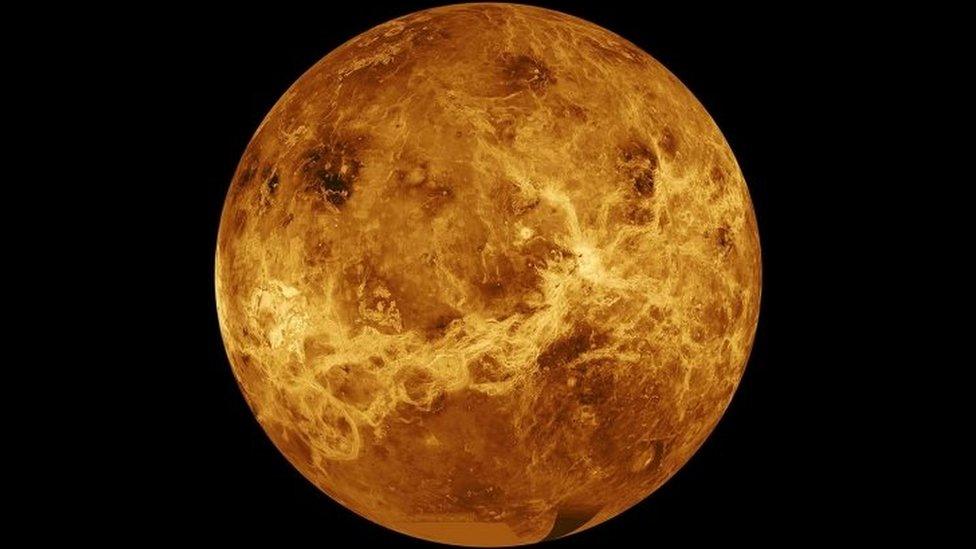Venus: Nasa to launch two new missions between 2028 and 2030
- Published
- comments

Venus is the hottest planet in the solar system
Nasa is sending two new missions to Venus, which will take place between 2028 and 2030.
Venus is the second planet from the sun and the hottest planet in the solar system with a surface temperature of 500 Celsius - hot enough to melt lead!
The missions, which have each been awarded $500m (ÂŁ352m) in funding, will explore the planet's atmosphere and physical features.
Nasa chief Bill Nelson said the missions would offer the "chance to investigate a planet we haven't been to in more than 30 years".
What will the Venus missions be looking at?
Nasa chief Bill Nelson announced the missions on Wednesday
These two new missions will be the first to visit Venus since the Magellan orbiter in 1990, but other probes have made fly-bys since then.
The Davinci+ (Deep Atmosphere Venus Investigation of Noble gases, Chemistry, and Imaging) mission will measure the planet's atmosphere to find out how it formed and grew. It will also aim to figure out whether Venus ever had an ocean.
Davinci+ is expected to return the first high resolution images of the planet's "tesserae" geological features. Scientists believe these features could be similar to continents on Earth and could suggest that Venus has plate tectonics, which are huge pieces of flat rock that make up the planet's surface.
It is astounding how little we know about Venus, but the combined results of these missions will tell us about the planet from the clouds in the sky through the volcanoes on its surface all the way down to its very core.
The second mission, Veritas (Venus Emissivity, Radio Science, InSAR, Topography, and Spectroscopy), will map the planet's surface to understand its physical history and investigate how it developed so differently than Earth.
It will use a form of radar to look at how the surface looks and discover whether volcanoes and earthquakes are still happening.
If you cannot see the quiz, click here.
- Published16 February 2021
- Published14 October 2023
- Published6 January 2021
